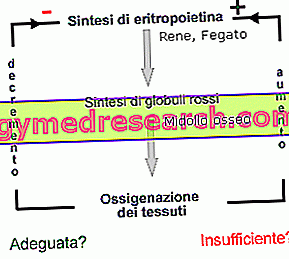Mercury in Food
What factors are affecting the concentration of mercury in food?
In most foods the mercury concentration is below the instrumental detection limit. However, this metal can contaminate certain foods, such as kidney and game liver, or cereals and mushrooms grown in polluted land.

"Mercury" white shark: it can be dangerous even when it is us
The major source of intake (70-90% of total mercury) is represented by fish, particularly from those caught in contaminated marine areas. For this reason, mercury concentrations in fish foods have a high degree of variability, depending on various factors.
Mercury in fish
Fish and molluscs are considered "mercury reservoirs", although in reality this is only partially true. In fact, most of these organisms do not undergo any poisoning due to high levels of mercury. In contrast, marine mammals seem more sensitive.
On the other hand, the amount present in their tissues could be a problem for humans who, while also using a physiological disposal system, are not as effective / efficient in eliminating pollutants.
Moreover, the mercury contained in fish is often in the form of methylmercury, a highly neurotoxic organic compound particularly present in creatures which, as we shall see, are at the top of the food chain.
Biomagnification: how does mercury get inside the fish?
In sea water, mercury is present only in small concentrations, but is absorbed in the form of methyl mercury from algae, at the beginning of the food chain. These are then eaten by plankton and other organisms higher up the food chain.
The fish effectively absorb methyl mercury and excrete it easily, albeit slowly.
Methylmercury is insoluble in water, so it cannot be eliminated with aqueous secretions. It tends to accumulate mainly in the viscera, but also in the muscles. This leads to the bioaccumulation of mercury, especially in adipose tissue.
The larger and older the fish become, the more mercury they may have absorbed during life . This is why predatory fish, marine mammals and birds have higher concentrations of mercury than creatures directly exposed to the pollutant.
Species at the top of the food chain can accumulate mercury concentrations up to ten times higher than their prey; this process is called biomagnification. For example, the herring contains mercury levels equal to about 0.1 parts per million, while the shark contains mercury levels greater than 1 part per million.
Importance of size
The fish with the highest concentration of mercury are the large predators (tuna, swordfish, verdesca) which, being at the top of the food chain, accumulate higher doses of the substance. The safest, on the contrary, are small fish (with the exception of molluscs) and farmed ones, such as salmon, sea bream, sea bass, catfish and trout.
Within the same species, at the same environmental conditions, mercury levels are proportional to the age, weight and body surface of the animal.
Importance of the habitat
Canned tuna is relatively safer than fresh tuna, as it is generally caught in the oceans, where the pollution rate is lower than in the Mediterranean. In contaminated waters the level of mercury can reach particularly high concentrations.
Unfortunately, this is one of the least controllable factors.
Generally, farmed fish are safer and run a lower risk of mercury poisoning, although they can still come into contact with the element due, for example, to contaminated feed.
Since the sources of pollution are greater in developing countries and lower health checks, fish and food from these areas are potentially more dangerous. Moreover, the emissions of these nations punish the efforts made by the most industrialized countries to reduce the environmental impact of the metal. It must be said, on the other hand, that although the uses of mercury have been significantly reduced in recent years, its concentration in our seas remains stationary and higher than that of the Atlantic Ocean.
Importance of cutting
Much of the polluting load is concentrated in organs that are generally removed before consumption (liver, brain and intestine); the muscular cut contains a lower percentage, but that can still be dangerous for health.
Maximum limits
Mercury: maximum limits in food (EC Reg. No. 1881/2006)
Food | Mercury* |
Fish products and fish muscle (24), excluding the species listed below. The maximum level applies to crustaceans, excluding the dark crab meat and those of the head and thorax of the lobster and of large similar crustaceans (Nephropidae and Palinuridae). | 0.5 |
Muscle of the following fish: monkfish (Lophius species); wolf fish (Anarhichas lupus); palamita (Sardinian Sardinian); eel (Anguilla species); mirror fish (Hoplostethus species); mouse fish (Coryphaenoides rupestris); halibut (Hippoglossus hippoglossus); marlin (Makaira species); rhombus of the genus Lepidorhombus (Lepidorhombus species); red mullet (Mullus species); pike (Esox lucius); white bonito (Orcynopsis unicolor); chaplain (Trisopterus minutus); Portuguese shark (Centroscymnus coelolepis); breeds (Raja species); redfish of the genus Sebastes (Sebastes marinus, S. mentella, S. viviparus); Pacific sailfish (Istiophorus platypterus); scabbard fish (Lepidopus caudatus, Aphanopus carbo); red sea bream (Pagellus species); sharks (all species); tirsite (Lepidocybium flavobrunneum, Ruvettus pretiosus, Gempylus serpens); sturgeon (Acipenser species); swordfish (Xiphias gladius); tuna and skipjack (Thunnus species, Euthynnus species, Katsuwonus pelamis) | 1.0 |
(mg / kg fresh weight) * | |
Mercury and Omega 3
Fish: how to regulate between omega 3 and mercury?
As it is now remembered daily by TV and newspapers, fish is a food of high nutritional value, more digestible than meat and rich in "good" fats. The latter, belonging above all to the Omega 3 series, lower plasma triglyceride levels, fight hypertension and, thanks to their antithrombotic action, protect us from cardiovascular risk.
Furthermore, fish fat has a lower cholesterol content than animal sources.
Fish is also rich in minerals such as calcium, phosphorus, iodine and selenium; also the vitamin content, in particular niacin, vit. B12, vit. D and vit. IS.
Does mercury cancel out the positive effects associated with regular fish consumption?
Remember that the toxicological risk depends on the concentration of mercury in the waters where the fish lived, the species they belong to, the size and, obviously, the quantity ingested and the frequency of consumption. Since the consumer cannot intervene on the first risk factor, it is necessary to act above all on the other variables.
Reduce mercury intake
Which types of fish to choose?
Omega 3 fats are present in high quantities especially in salmon and blue fish (especially anchovies, herring, mackerel and sardines). These, being not at the top of the food chain or coming from specific farms (salmon and trout), are considered to have a low risk of contamination.
On the contrary it is a good rule not to overdo the consumption of fish with high mercury content, such as:
- Royal mackerel: Scomberomorus commerson, different from the one sold in box ( Scomber scombrus ) and destined above all to the American market (very rare in the Mediterranean, is instead typical of the Indian Ocean, Pacific and Red Sea).
- Tuna
- Swordfish
- Shark.
Avoid mercury during pregnancy and lactation - Special precautions
The categories most at risk are pregnant and lactating women. Although the results of the studies often move in opposite directions (sometimes catastrophic, other times more permissive), for pregnant women, the US FDA (Food and Drug Administration) considers a weekly fish intake of up to 350 grams to be safe, provided that species at higher risk are excluded (gibbous tile, swordfish, shark, royal mackerel).
Selenium against mercury
The toxic effects of mercury are mitigated by the simultaneous intake of selenium, a mineral naturally present in fish but also in yeast, cereals, meat, shellfish and specific supplements.
Conclusions
In conclusion, if these simple tips are respected, the balance definitely hangs on the side of the benefits linked to the regular consumption of fish. For our health it is therefore advisable to consume between two and four weekly portions of fish food (one portion corresponds to 100-150 g of fresh fish or 50 g of preserved fish), choosing fish from time to time different and giving preference to those small or breeding.



